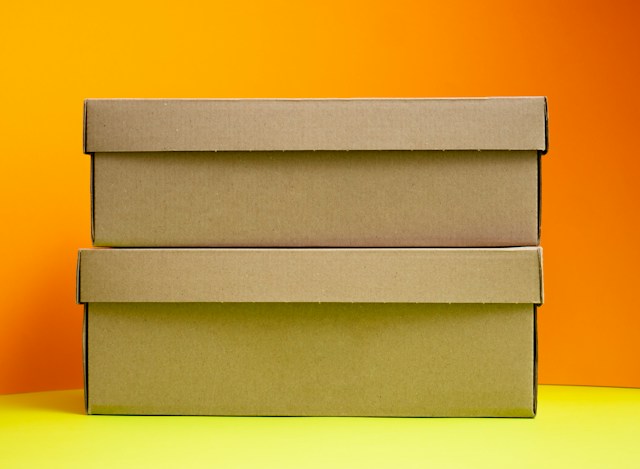In the ever-evolving landscape of business and marketing, packaging definition plays a pivotal role. It goes beyond just enclosing a product; it encompasses the art and science of creating an appealing, functional, and memorable exterior for a product.
Packaging isn’t merely a means to an end; it’s a strategic tool that can shape a brand’s identity, influence consumer decisions, and even contribute to sustainability efforts.
Let’s delve into the world of packaging and unveil its profound impact on the way we perceive, purchase, and interact with products.
Register for packaging regulations
Prevent paying fees and let us handle it for you
Packaging definition
Packaging, in its essence, refers to the design, materials, and construction used to encase and protect a product.
It serves as a shield against external factors that might compromise the product’s integrity, such as environmental conditions, transportation, and handling.
However, packaging goes beyond this functional aspect – it’s an opportunity for brands to tell a story, communicate values, and resonate with their target audience.
The multifaceted roles of packaging
Packaging wears several hats in the world of marketing and consumer behavior. It’s a silent communicator, a protector, and a brand ambassador. Here are some of its vital roles:
1. Brand Identity and Recognition
Packaging is often the first interaction a consumer has with a product. The design, colors, typography, and logo on the packaging create a visual identity that helps the brand stand out. Think about the iconic Coca-Cola red or the minimalist elegance of Apple’s product boxes – these designs are inseparable from the brands themselves.
2. Consumer Attraction and Engagement
In a crowded marketplace, packaging needs to capture attention instantly. Bright colors, bold graphics, and creative designs are employed to engage potential buyers and encourage them to explore further. A well-designed package can spark curiosity and emotion, making the product more enticing.
3. Information Conduit
Packaging serves as a vehicle to convey essential information about the product – its features, usage instructions, nutritional details, and more. Clear, concise, and easily accessible information is crucial to assisting consumers in making informed purchasing decisions.
4. Differentiation and Competition
Effective packaging sets a product apart from its competitors. It communicates uniqueness and positions the product as a better choice within its category. Consider the plethora of cereal boxes on a supermarket shelf – each one strives to stand out and persuade consumers that it’s the best option.
5. Sustainability and Environment
As environmental concerns grow, packaging plays a crucial role in sustainability efforts. Brands are opting for eco-friendly materials and minimalist designs to reduce waste and promote environmental responsibility.
Key elements of effective packaging
Creating packaging that accomplishes these roles involves careful consideration of various elements. These elements work in harmony to create a cohesive and impactful packaging solution:
1. Structural Design
The shape, size, and structure of the package must align with the product’s form and function. A snug and secure fit not only protects the product but also enhances its visual appeal.
2. Visual Design
Graphics, colors, typography, and imagery come together to create a visual identity that resonates with the target audience. The design should reflect the brand’s personality and values.
3. Materials
The choice of materials affects the package’s durability, environmental impact, and aesthetics. Sustainable materials are gaining traction as consumers become more conscious of their ecological footprint.
4. Functionality
Packaging should facilitate ease of use, storage, and transportation. Functional features like handles, resealable closures, and pouring spouts enhance the user experience.
5. Storytelling
Compelling packaging tells a story that connects with consumers on an emotional level. Whether it’s the history of the brand, the inspiration behind the product, or the people who make it, storytelling humanizes the product.
6. Regulatory Compliance
Certain products require specific information for legal or safety reasons. Packaging must adhere to these regulations without compromising the overall design.
Strategies for crafting impactful packaging
Creating packaging that checks all these boxes requires a strategic approach. Here are some strategies that brands can employ:
1. Understand the Audience
Knowing the target demographic’s preferences, needs, and values is fundamental to designing packaging that resonates. A packaging design that appeals to teenagers might not have the same impact on senior citizens.
2. Consistency with Brand Identity
Packaging should align with the brand’s existing visual identity. Consistency across all touchpoints creates a cohesive brand image that’s easily recognizable.
3. Balance Aesthetics and Functionality
While aesthetics are crucial, functionality should never be sacrificed. A beautiful package that’s difficult to open or doesn’t protect the product adequately can lead to customer frustration.
4. Embrace Minimalism
Simplicity can be powerful. Minimalist designs often convey sophistication and a commitment to environmental sustainability.
5. Incorporate Interactive Elements
Interactive packaging, such as QR codes, augmented reality, or hidden messages, can enhance consumer engagement and create memorable experiences.
Conclusion
Packaging definition goes far beyond its literal meaning. It’s the embodiment of a brand’s personality, the first handshake with consumers, and a silent storyteller.
In an era of conscious consumerism and fierce competition, packaging is a tool that can’t be underestimated.
By understanding its diverse roles, key elements, and strategic approaches, brands can craft packaging that leaves a lasting impression and propels them toward success.

